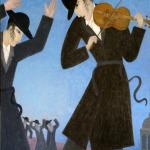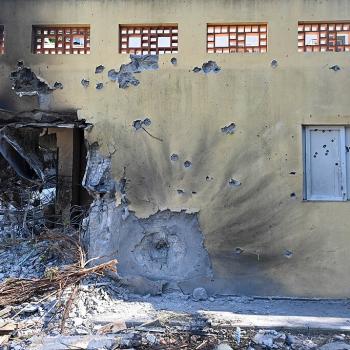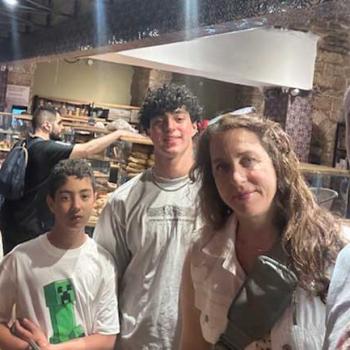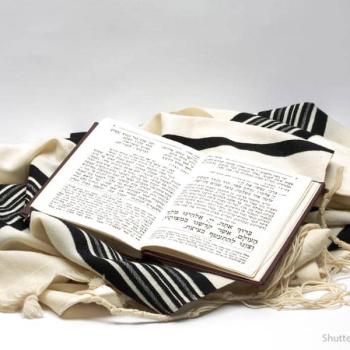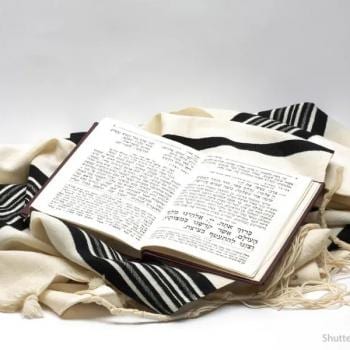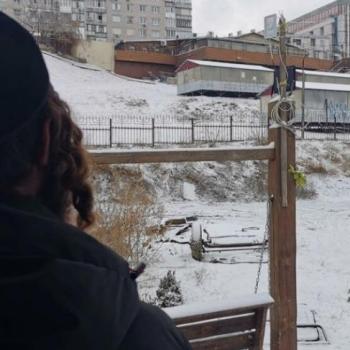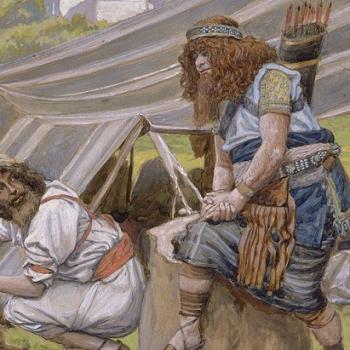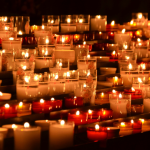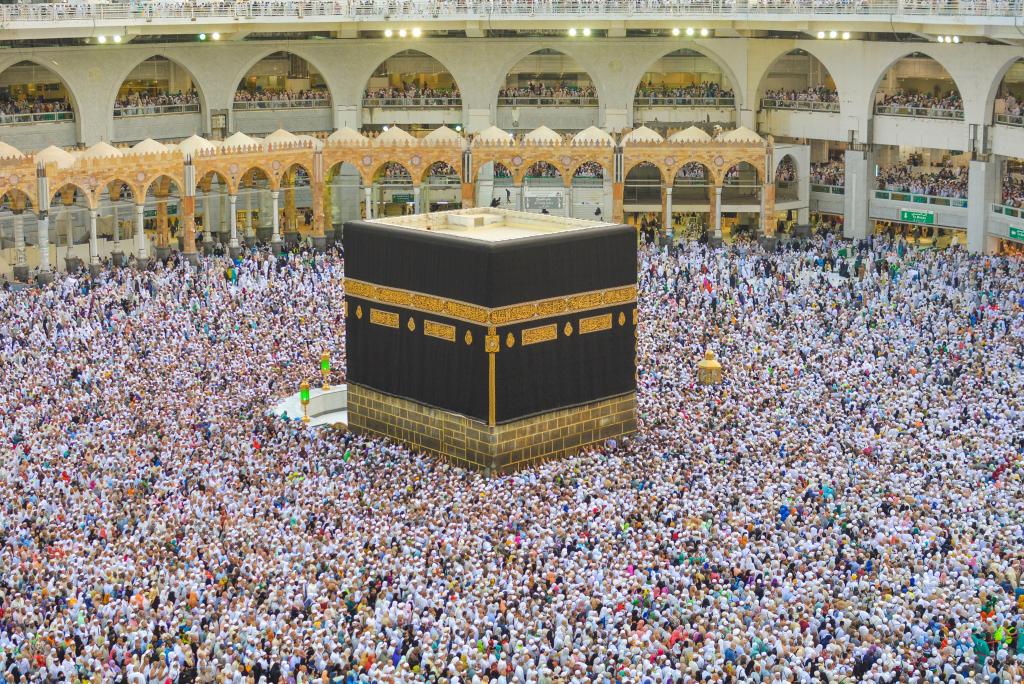
When Jews and Christians watch video of the Muslim Hajj from August 9 to August 14, plus the 3-day celebration of Eid al-Adha, very few of them will see the connection between Makka’s Hajj and Jerusalem’s three pilgrimage festivals, especially the eight day holiday of Sukkot/Shemine Ahtsreret.
If they learn about the Qurbani sacrifice that is offered at the time of Eid al-Adha to show gratitude towards Allah and to provide for the poor and needy they will not know that Prophet Muhammad was once asked by his Companions: “O Prophet of Allah! What is this qurbani?” He replied, “It is the Sunnah (practice) of your father Ibrahim.” (Hadith – Ibn Majah)
And very few Christians or Jews realize that for more than 1.000 years, while Jerusalem’s First and Second Temple–Bait ul Muqaddas/Beit HaMiqdash stood, the Jewish festival of Hag Sukkot was celebrated as a Hajj, a pilgrimage festival.
The Hajj Sukkot
In Biblical times the Hebrew word Hag was pronounced Hajj, but later this word was no longer pronounced with a J sound but with a G sound.
The Torah declares, “Celebrate Hajj Sukkot for seven days after you have harvested the produce of your threshing floor and your winepress. Be joyful at your festival—you, your sons and daughters, your male and female servants, the Levites, the foreigners, the fatherless and the widows who live in your towns.
“For seven days celebrate the festival to the Lord your God at the place the Lord will choose. For the Lord your God will bless you in all your harvest and in all the work of your hands, and your joy will be complete. Three times a year all your men must appear before the Lord your God at the place he will choose: at the Hajj of Matzah (Passover), the Hajj of Weeks (any one day between Passover and Shavuot), and the Hajj of Sukkot (the harvest festival). (Deuteronomy 16:13-16)
The Hajj of Sukkot was chosen by Prophet Solomon to dedicate the First Temple in Jerusalem. (1Kings 8; 2). Hajj Sukkot was so important during the centuries when Solomon’s Temple stood that it was often called simply “the Hajj” (1 Kings 8:3; 8:65; 12:62; 2 Chronicles 5:3; 7:8) because of the very large numbers of Jews who came up to the Temple in Jerusalem,
On each of the first six days of Haj Sukkot it was traditional to circle the Temple alter while reciting psalms. On the seventh day of Sukkot the custom was to circle the Temple alter seven times. As the Oral Torah says: “It was customary to make one procession around the altar on each day of Sukkot, and seven on the seventh day.” (Mishnah Sukkah 4:5).
Each circle is done in honor of a prophet; Abraham, Isaac, Jacob, Joseph, Moses, Aaron and David. As Prophet David, the father of Prophet Solomon, wrote in the Zabur:
“Judge me, Lord, for I have led a blameless life; I have trusted in the Lord and have not faltered. Test me Lord and try me, examine my heart and mind; for I have always been mindful of your unfailing love and lived in reliance on your faithfulness…I wash my hands in innocence, and encircle your alter, Lord, proclaiming aloud your praise and telling stories of all your wonderful deeds.” (Psalm 26:1-7)
Muslims will see some similarities and some differences between the Jewish Hajj and the Islamic Hajj.
Decline of the Pilgrimage Aspect
With the destruction of the Second Temple by the Romans in 70 CE, the pilgrimage aspect of the week long harvest festival began a gradual decline in the spiritual consciousness of the Jewish People. Most of the many thousands of Jews from foreign lands outside the Land of Israel; and the tens of thousands of Jews from all over the Land of Israel outside the city of Jerusalem; who used to came each year to celebrate the week of Sukkot in Jerusalem at Bait ul-Muqaddas, the furthest sanctuary; ceased coming.
Two generations later, after a second major Jewish revolt (132-135 CE) in the land of Israel, the Romans rebuilt Jerusalem as a pagan city filled with idols, That stopped all Jews from coming to the ruined site of the Jerusalem Temple–Bait ul Muqaddas/Beit HaMiqdash.
But even centuries after the destruction of the Temple, and the end of pilgrimage, generations of Jews repeated wonderful tales about pilgrimage experiences in Jerusalem and at the Holy Temple.
Crowded as Jerusalem was, there always seemed to be enough room to squeeze everyone in. Indeed, every year it seemed a continuing miracle that pregnant woman didn’t suffer a miscarriage, a rain shower never quenched the fire on the alter, the wind never blew smoke from the fire into the crowds of worshipers, and no one was ever bitten by a scorpion or a snake.
Most amazing of all, no one complained, “It is difficult for me to find lodging in Jerusalem”. (Pirkay Avot 5:8)
The wonderful fragrance of the Temple incense was so widespread throughout the city that brides in Jerusalem did not need to use perfume. (Yoma 39b)
Today the overwhelming majority of Jews outside the Land of Israel live in Protestant countries where pilgrimage plays little or no role in religious life. Thus, it is very hard for most Jews to feel the tremendous spiritual uplift that can occur to pilgrims on the long path to, and amidst the mass tumult of, a uniquely holy and sacred place.
Only a rare outside observer can experience even a small fraction of the spiritual feelings of those who belong to a pilgrimage tradition. One such observer, Mark Twain, wrote: “It is wonderful, the power of a faith that can make multitudes upon multitudes of old, weak, young and frail enter without hesitation or complaint upon such incredible journeys and endure the resultant miseries without repining.”
Muslims’ Furthest Sanctuary: Jerusalem
For Muslims, the Furthest Sanctuary is located in Jerusalem. “Glory to He Who carried His servant by night, from the Holy Sanctuary to the Furthest Sanctuary, the precincts of which We have blessed. so that We might show him some of Our signs. Surely He is the All-Hearing, the All-Seeing. (Qur’an 17:1)
It is significant that the ruins of the Jerusalem Temple was the site of Prophet Muhammad’s ascension—miraj– up to the heavens.
The Ka’ba built by Abraham and Ishmael, was some centuries later polluted by the introduction of 300+ idols. Some centuries later Solomon built a Temple on the site where Abraham bound Isaac as an offering.
Centuries later the Temple of Solomon was destroyed by the Babylonians. It was then rebuilt only to again be destroyed some centuries later by the Romans, who would later pollute the whole site with a Roman city with buildings and streets filled with idols,
One might say the destruction of the Furthest Sanctuary center of monotheistic pilgrimage in Jerusalem by the pagan Romans was now, five and a half centuries afterward, being overcome by Prophet Muhammad’s ascension (miraj) up to the heavens, and the soon to be realized removal by Muhammad of idols from the paganized Ka’ba (Holy Sanctuary) in Makka.
When will the cycle of the pollution and destruction of the two Holy Sanctuaries, first built by Prophet Abraham and his two sons, come to an end?
The Prophet Zechariah envisions a future time when God helps us to establish worldwide peace. All the nations in the world will then travel to Makka and Jerusalem to worship God.
During Hajj Sukkot, a future Jerusalem Temple will welcome both Jews and non-Jews, including those who were previously Israel’s enemies: “Then the survivors from all the nations that have attacked Jerusalem, will go up year after year to worship the King, the Lord Almighty, and to celebrate Hajj Sukkot.” (Zechariah 14:16)
Just as the Ka’ba has always welcomed all Muslims who answer the call: “Call upon the people for Hajj. They will come to you on their bare feet or riding any weak camel and they come to you from every far desert. (Qur’an 22:27).
And God willing: In that day there will be a highway from Egypt to Assyria. The Assyrians will go to Egypt, and the Egyptians to Assyria. The Egyptians and Assyrians will worship together. In that day Israel will join a three-party alliance with Egypt and Assyria— a blessing upon the earth. The LORD of Hosts will bless them, saying, “Blessed be Egypt My people, Assyria My handiwork, and Israel My inheritance” (Isaiah 19:23-5).


